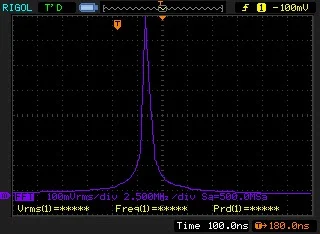The PsssT Kit, coming soon from Mostly DIY RF
SolderSmoke Podcast #248 is available for download:
Audio: http://soldersmoke.com/soldersmoke248.mp3
Video: (800) SolderSmoke Podcast #238 -- Spurs and Filters, S-meters, 6BA6 mania, Shirt-pocket rigs, Mailbag - YouTube
Travelogue: Trip to the Dominican Republic 3-9 August. Thinking about the M0NTV video on mixers...
Solder Smoke Shack South is almost done. I am thinking about workbenches, operating tables and antennas. How high should an electronics workbench be? Table height? Or workbench (woodwork) height?
My son and I went to see "Oppenheimer" Trinity test scene very cool. They wanted to see if the gadget would work!
Is the SolderSmoke blog completely archived on the WayBack Machine? Please check and let me know. Thanks.
Bill's Bench:
-- I've been working a lot of DX with the homebrew rigs: Indonesia, Australia, Japan, Hawaii. Lots of fun. 15 meters has been especially good. But the rigs still need work:
-- M0NTV's video got me to put TinySA to work. I found that output from dual banders could be improved. Spurs and harmonics. Yuck. I need more TinySA -- ordered the TinySA Ultra.
-- Allison KB1GMX helped a lot. EB63A amp was unstable, especially on 10 meters. Higher frequencies are harder! Tightened up shielding, negative feedback, and bypassing. This all helped, but I found that I needed to take the higher frequency LP filters out of the amplifier box. W3NQN filters are better, with steeper skirts and better 2nd harmonic rejections. NanoVNA proving very useful. https://www.gqrp.com/Datasheet_W3NQN.pdf
-- Also worked on the Bandpass filters for these rigs. Farhan's comments on skirts of different filter configurations. Some are "LSB" filters (with steeper skirt at the highest freq) and some are "USB" filters (with the steeper skirt at the lower frequency) See diagrams on the blog page. So I built USB new filters for 12 meters and for 10 meters.
-- Danger that my unshielded wooden box rigs might be inviting feedback. So I shielded the 1510 rig with copper guitar amp tape (conductive adhesive). Good stuff.
-- Phase Noise rears its ugly head again. See blog posts.
----------------------
SHAMELESS COMMERCE DIVISION:
Mostly DIY RF getting ready to release PsssT kits. Target date: December 18, 2023 (E Howard Armstrong's birthday). https://mostlydiyrf.com/
Amazon Search box seems to have died. I can't get it back. Can anyone tell me what happened? (There seems to be "explanations" from Amazon about this, but they are written in a strange language that I cannot follow.) Something similar happened with the Google Ads on this blog page. Apparently you can't have ads both on YouTube and blogger.
But hey, there is Patreon for those who want to support the podcast and blog.
-------------------------
Pete's Bench
An S-meter for Bill?
6BA6 Mania!
QRP SSB with 6BA6
Shirtpocket rig re-build
Mailbag:
Walter KA4KXX has a great article about homebrewing in the September 2023 QCWA Journal.
Steve KC1QAY -- Has joined the CBLA. I sent him a 3579 crystal. He built a MMM and experienced JOO. And Allison KB1GMX is in his local radio club. TRGHS.
Ajay VU2TGG in Pune, India -- launching a high school receiver effort.
Denny VU2DGR The Wizard of Kerala: https://soldersmoke.blogspot.com/2023/08/the-wizard-of-kerala-india-denny-vu2dgr.html
Joe VK4BYER working with kids a remote Australian community. FB.
Todd K7ZF -- Wants to get into homebrewing. Advised him to start small.
Dean KK4DAS: Fixing Hallicrafters Worldwide RX. Ciudad Trujillo! Got question from Mark in the VWS Makers Group: HOW DOES Michigan Mighty Mite REALLY Work. See blog.
Trevor Woods -- Info on Super Islander Mark IV made in Cuba from old CFL bulbs. FB.
Bob KD4EBM sent me some great stuff: Sony SW receiver, QCX Mini. Made a CW contact with the QCX. Felt virtuous -- it is going to the DR. Thanks Bob.
Peter KD2OMV: One of the guys I worked with the ET-2 transceiver. Great to hear from him.
Armand WA1UQO Richmond area radio museum? https://www.youtube.com/watch?v=BSCmljje1p8
Mike WN2A -- Sent me a great care package with lots of toroids. A lifetime supply! Thanks Mike!
Nate KA1MUQ got his Doug DeMaw receiver going after 38 years! FB. Been there, done that!
Tony: G4WIF Liked Valveman video about Gerald Wells. He visited him! https://soldersmoke.blogspot.com/2023/08/valveman-story-of-gerald-wells.html
Dean KL7MA Bill talked to him on 15 SSB. He had worked Wes W7ZOI! FB!




















